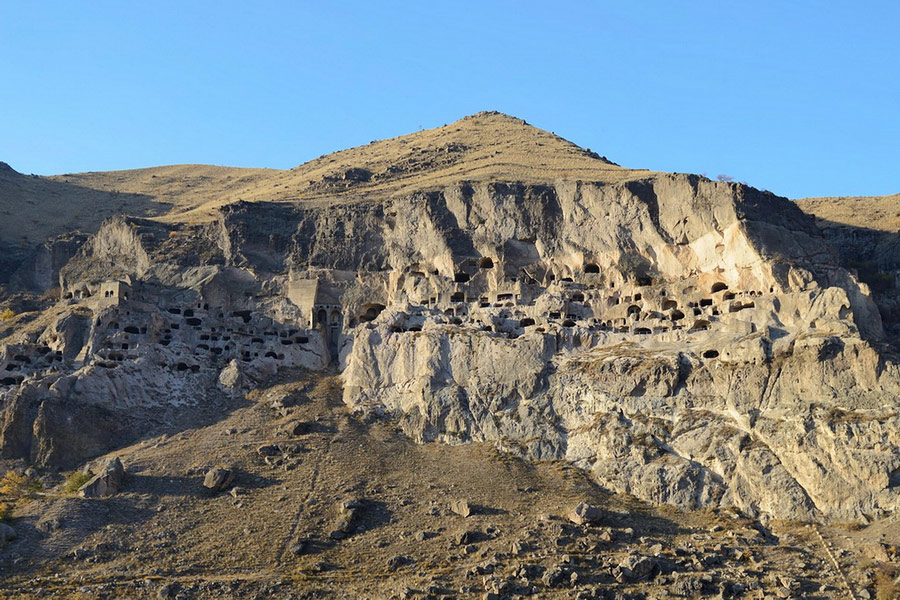Vardzia, Georgia

Vardzia is a fascinating ancient city, a sprawling complex of hundreds of caves carved into a mountain, arranged across thirteen levels. It's a labyrinth of interconnected passageways, creating miles of corridors and staircases that weave through the rock.
The story of Vardzia stretches back to the era of George III, the father of the famed Queen Tamar. In the middle of the 12th century, monks began carving out cells in the solid mountain tuff, eventually crafting the impressive Church of the Dormition. By the late 12th and early 13th centuries, the church walls and ceilings were adorned with frescoes. These stunning paintings, many of which have lasted through the ages, bring to life scenes like the Last Supper and Judgment Day. Among these, the portraits of Queen Tamar and King George are especially revered.
What started as a monastic retreat soon expanded, growing into a remarkable cave city that housed thousands. Its peak development spanned from 1184 to 1205, hitting its golden age under Queen Tamar's rule. Tamar turned Vardzia into a beacon of Georgian Christian culture. Interestingly, the city was never fortified with walls. Instead, its natural rock face provided a formidable barrier against potential invaders, keeping the inhabitants hidden from unwanted attention.
Disaster struck in 1283 when a massive earthquake hit southern Georgia, destroying over two-thirds of this cave metropolis. Many of its caves crumbled or were left exposed, reducing the once vast and majestic city to the ruins we see today.
Now, Vardzia's cave complex reveals more than 600 rooms, each serving a different purpose. From temples and chapels to libraries, baths, and dining halls, the caves delve 50 meters deep into the rock. You'll find living spaces, monk cells, bakeries, and even pens for livestock. The city was also ingeniously designed with a water supply system that could deliver up to 170,000 liters of water daily. Storage tanks ensured that, even under siege, Vardzia could hold out without running out of water.
After falling to Persian and then Turkish forces in the mid-16th century, life in Vardzia came to a standstill for 2.5 centuries. It wasn't until 1828, when the Russian army took over the Samtskhe-Javakheti region, that monastic life began to stir once again. The Soviet era saw the monastery closed and Vardzia declared a museum-reserve. But in the 1980s, efforts by Patriarch Ilia II of the Georgian Orthodox Church reignited monastic activities and regular worship services. The monastery was eventually reinstated and remains active.
Just a stone's throw from Vardzia lies the similar cave complex of Vanis Kvabebi, a quieter spot that attracts adventurous travelers. It's free to enter, making it a must-visit for those exploring the area. A trip to Vardzia wouldn't be complete without also experiencing the tranquility and grandeur of Vanis Kvabebi, offering a peaceful moment to reflect on the incredible ingenuity of these ancient cave cities.




